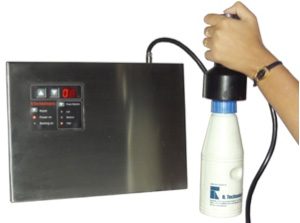When you work in a company that employs liquid filling technology to package products, you know that the objective is to make the process as automated as possible. Volumetric fillers, for example, pour liquids into containers at a uniform, continuous fill level, while cooling conveyers help molten goods cool faster than typical conveyor belts. For many organizations, capping or sealing the product is one of the final steps in automating the process. Many firms choose to conduct at least some of this procedure by hand, from filling the cap hopper through capping the containers. This is not only a time-consuming procedure, but it also consumes a significant amount of time that might be spent on other parts of your organization. Fortunately, there are a variety of devices available to assist in mitigating the problems associated with hand capping.
Cap Elevators
Cap elevators allow caps to be stored until they are needed. When the hopper of a capping machine runs low, the device is triggered. Rather than keeping the lids in a box, this automatic elevator hopper is intended to feed caps to later automated capping equipment. It is intended to provide a wide variety of different-sized caps, from 10mm to 110mm, making it a versatile solution for automating the first step of the capping process—finding the caps.
Cap Sorters
Cap sorters are valuable machines that help arrange caps to face the right way when the capping machine takes them up to use. Cap sorters are available in elevator configurations, which assist deliver a supply of caps to the capping machine, or vibratory designs, which operate by shaking the caps’ surface until the cap shifts to being appropriately positioned. Once the caps are ready to be fitted, these machines guarantee that the capping machines can do their work correctly.
Capping Machines
Finally, the capping machines themselves are responsible for placing the caps on each container. There are four sorts of machinery for this purpose: spindle cappers, chuck cappers, snap cappers, and wheel pluggers. As the container sits motionless underneath a station, spindle cappers spin the caps onto the goods. Chuck cappers also turn caps onto containers, but this machine is meant to maintain the items flowing at a regular rate, so the lid is placed on the container, and the container is then passed through the machine, which has lid tighteners along the top. Vertical wheel pluggers are used for containers requiring plugs rather than lids, while snap cappers are used to firmly snap the caps onto the container.
When you utilize R Technologies, Induction Cap Sealing Machines, you may save time easily. Don’t stress yourself out by manually capping your items. Instead, use these machines to automate the process, and you’ll be astonished at how much more you’ll be able to do!

